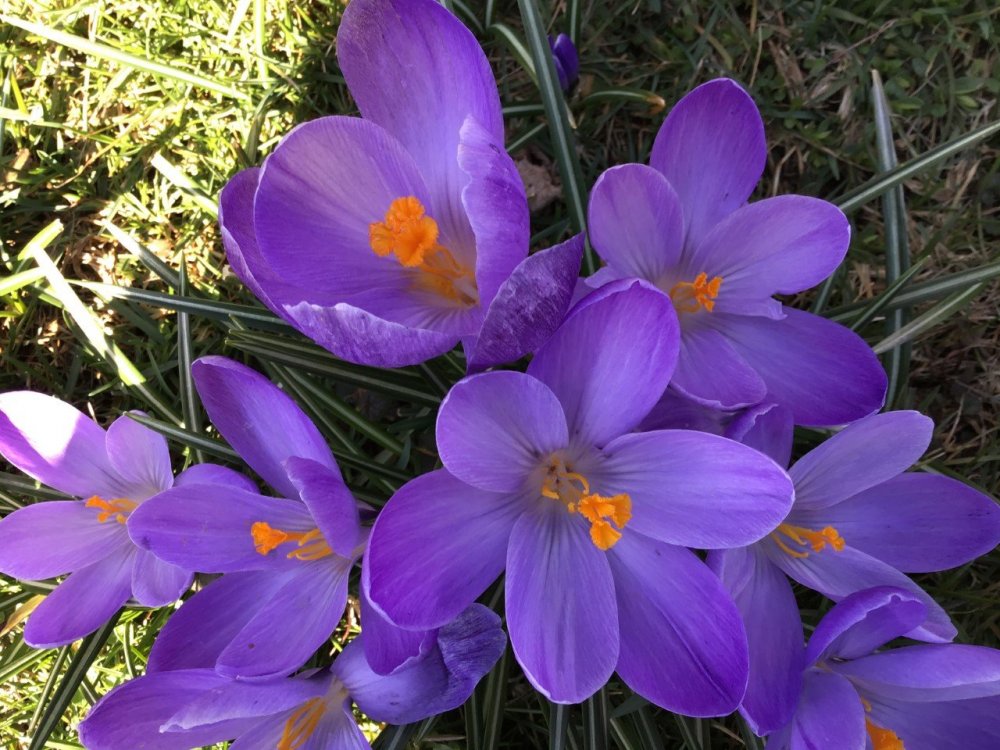-
Posts
6,192 -
Joined
-
Days Won
131
Content Type
Profiles
Forums
Events
Classifieds
Posts posted by lavender
-
-
-
-
You should always be careful when using natural remedies as well as stuff you pluck from the roadside or your yard. First be sure it isn't contaminated with chemicals or pollutants. Things growing near a road generally are. Next be aware that dosages are never precise unless the plant undergoes chemical analysis. Oh, and do make sure you have the plant you think you have.
There can be side affects. Plantain can cause diarrhea and low blood pressure. Women who are pregnant should never use it as it can cause miscarriages. Not for nursing mothers either. It can cause skin allergies and people who are allergic to melons are particularly at risk.
That said I dose myself all the time. I make salves, creams and other things. Mostly though I buy my supplies. The dosage issue is what concerns me. You can easily get too much or not enough when you do an extraction from a plant. Mullen is and has always been my favorite. It makes a great addition to a steamer and gets rid of bronchitis
-
It takes 6-8 weeks to grow peppers to transplant size. It takes 9-14 days to germinate peppers. So count back that many weeks from May 30 which is our last frost date. Germinate at 68-85 degrees F.
Tomatoes take 5-7 weeks to transplant size. The seeds take 6-12 days to germinate. The germinate at the same soil temperature as peppers.
Both should be put out after the last frost date.
I tend to start stuff a bit early but I do it in a heated greenhouse and then move them to an unheated one. This makes it possible to slow growth and harden them off at the same time. Leeks get started in the last week of February. We've had great years for leeks and years where we got nothing. Last year I found some leek seeds that were supposed to be able to be direct sown but they came to nothing. Weather has been weird lately.
-
Looks a lot like my humidifier in a draft.
-
Really like the cows in the ugly sweaters!
-
4 hours ago, Lupara said:
Looks at though it is the same color as the "Sun Gold" but bigger. If you can go by the color in pictures. I like the name Orange Holdover. Hope you get something good next year. I'm still betting on "Sun Gold" being the parent plant.
-
Had great eggplants and peppers this year but we grew them under black ground cover on ground that has been fallow for a number of years. Lots of summer squash, kale and cabbage. What green beans that germinated were fine but many didn't germinate. Tomatoes were awful. Everything else was mediocre. The entire yard is in the process of being ditched for drainage. Looks as though a demented gopher has been at work. Oh, and I have some great broom corn if anyone wants to make brooms.
-
Some tomatoes will cross pollinate and others are only self pollinating. Generally tomatoes self pollinate unless deliberately crossed. San Marzano, purple Cherokee and yellow pear are heirlooms and the seed is stable. If you save the seed you will get the same tomato if they self pollinate which they do. Sun Gold is an F1 hybrid which means that even a self pollinated seed will not match the parent. Celebrity tomatoes are hybrids and I don't know if the seed is stable or not. Some hybrids are back bred until the seed stabilizes. Tomato breeders generally keep this a deep dark secret. From your description here I'm guessing that the F1 Sun Gold self pollinated and the resulting seed had some of the characteristics of whatever was crossed to produce the hybrid thus the larger size. What you have may or may not produce the same tomato from he saved seed. F2 hybrids are rarely stable. I hope it tastes good!
-
The spotted lanternfly feeds on over 65 different crops including grapes, apples, peaches and yes, our native staghorn sumac. Tree of Heaven (Ailanthus altissima) does exist around here but is an ornamental import from Asia that has gone native and is not as prevalent as it is in some other areas. They stink! Literally, I grew up with one outside my bedroom window. I don't think that we have to worry about them breeding on Tree of Heaven as much as we have to worry about them munching on cash crops. They will devastate the wine industry and aren't going to be good for the timber industry as they also feed on walnuts and some other hardwood trees.
The big problem is that they lay eggs just about anywhere. They will hitch a ride on vehicles and anything that is transported that has been outside. They found egg masses not too long ago at a Penn State football game that had come in on a vehicle. It was an isolated incident and so far we are safe.
-
8 hours ago, justjoe said:
Thank you for your response, I knew they had to be striated, but didn't know about the possible mutations. I have loads of irises in three colors . I separated and thinned them last year, gave lots away.
.
I had an iris with a border for awhile. Don't know where it went but irises didn't do well this year. Most of them disappeared completely. I'm assuming it came from seed unless it was a mutation of some sort. I don't practice what I preach and sometimes let plants that shouldn't go to seed. I have a daylily this year that has variegated foliage. It is a mutation. I Replanted it and am interested in seeing if the flower is the same as the parent plant.
-
7 hours ago, Lupara said:
I have an upper and lower garden. Both suffer from early blight. Last year, the tomatoes in the upper garden were plentiful while I battled the blight. This year the tomatoes were rotated to the lower garden. The upper got peppers, zucchini, summer squash, and cucs. Here is where it gets interesting. Some tomato seeds from last years crop germinated and grew in the upper garden along side the peppers I had planted. I left a few grow to observe. The peppers and zucchini were attacked by the same fungi as usual while the over-wintered tomatoes were completely impervious to it. One plant is touching a Cheyenne pepper plant with yellowed leaves and remains green from ground to tip. It appears the seeds that were impervious were the only ones to germinate. One tomato plant has several clusters of fruit I'm hoping will ripen enough to save the seeds and see if the genetics carry over to the next generation. I'll plant resistant varieties now but they are just that, resistant. They still succumb to the blight eventually. I've never seen plants this impervious to the blight.
I've found the same thing. "Volunteers" are much healthier than the plants that we grow from bought seed. The problem is that they get such a late start that they often don't produce fruit. I get early blight each year but it comes so late that it doesn't seem to have much effect except for a lot of the lower leaves brown off. This year the Celebrity tomatoes have septoria leaf spot and those are the only plants that are producing anything. Last year it was something, I forget what, that was rotting the tomatoes, peppers and egg plant stems at ground level. I think that was our fault though because we mulched with grass clippings that evidently brought whatever it was in. I identified it but can't remember what it was. Fungicide got rid of it but it was too late for many of the plants. It seems to be gone this year.
The newer tomatoes are pretty much self pollinating so unless you are growing a hybrid it should come pretty much like the parent. It will be interesting to see what you get.
-
It's too much of a crap shoot, Joe. First of all iris seeds are not necessarily that easy to germinate. They need to be stratified and even then some will germinate in the spring and some will not. I read that it can take years to germinate some seeds. Then it is a couple or 3 years until they bloom under good conditions. They probably aren't going to be the same as the original flower as cross pollination will probably have occurred. This can be lots of fun because you may get a new beautiful hybril but you are just as likely to get something that you hate. Better to raid your neighbor's garden for a fan or two and you know what you are getting. You should remove the seed pods before the form so the plant concentrates its energy on growth and rhizome production rather than setting seed. You are lucky that you can grow them they are my favorite flower. Unfortunately, most of my irises die. They don't like my soil.
-
Don't do it unless you want to wait two or three years for a decent sized head of garlic. You can use them in stir fry before they form skins or make a garlic pesto out of them.
-
With a black plastic bag. You might be able to get it hot enough to sterilize it.
-
3 hours ago, tiffanytwisted said:
We didn't deal with the soil yet. It's still in the containers. Can we just dump it?
If you really think that the soil in the pots is contaminated do the plastic bag thing again. If you think it was just stress just cover it up for the winter.
-
We are currently eating zucchini at every meal so I sympathize. When you garden you eat whatever does well that year unless you find a way to off load it onto what used to be friends.
- WMJ77, tiffanytwisted and Sanibel
-
 3
3
-
Pick the tomatoes and let them ripen off vine. We did this for years before "global warming" gave us a long enough growing season to ripen on the vine. Just don't put them too close together as some will rot and it will spread. As a preventative to the tomatoes becoming infected also dip them in a 10% bleach solution. Some diseases will infect the tomatoes and some won't . Whatever the plants have they are not going to be producing more tomatoes so put them in a plastic bag and let it lay in the sum for awhile. This will kill most things. Blight spores die at 150 degrees F. Burning green plants is difficult and you don't want to let they lay around until they dry. No, don't douse them with gasoline!
 . Burning barrels and gasoline don't mix she said from experience.
. Burning barrels and gasoline don't mix she said from experience.
Early blight shows concentric circled brown or black spots and starts from the bottom up. Late blight is a wet gray spot that turns brown or black. It too starts at the bottom of the plant. Septoria leaf spot is another one that will eventually turn your leaves brown and it is prevalent at this time of year. It starts with yellow spots on the bottom of the leaves. They come through on the top and turn brown. If you have root rot from all the rain the plant will start to wilt as well as developing yellow and brown leaves.
The problem is that all are these are caused by fungi that thrive in humid conditions and and are carried by water. See the problem? There isn't much you can do to prevent it this year and this late in the year I wouldn't bother with fungicides. You could remove and destroy the infected plants and spray the others. Depends on what you have as to how well it would work.
At this point I was going to suggest growing them on black plastic then I saw your post. So 'nother whole ball game. I see no lesions on the leaves so since they are in containers you might look to growing conditions. We have had a lot of rain but it hasn't been sufficient to make it unnecessary to water pots that contain big plants that are in the sun. Too much water? Those containers do have drainage holes? Irregular watering can stress the plant. No more than one plant to a container? Sufficient air flow? Since they are in pots if they did pick up something it was airborne but now your soil may be contaminated. Fun, huh? You might look into blight and wilt resistant tomatoes. Google it. Grow them from seed. It isn't that difficult. Maybe the bio lab has some grow lights.
Oh, and they did grow. Your tomatoes look better than mine. My garden is a swamp.
- Pompeii, tiffanytwisted and WMJ77
-
 1
1
-
 2
2
-
-
Wait until the tree is dormant. That would mean late fall or early winter. The roots are allegedly fairly shallow not going more than 2 feet into the soil assuming you are talking about the miniature ones. Start digging at about the drip-line of the tree or even further. The roots are fibrous so cutting a few won't hurt. There is not taproot that can be damaged. Get a good root ball and wrap it in burlap. They advise one foot of root ball per each inch of tree trunk. Don't let it dry out.
Dig a hole at least twice as big as the root ball. Put in the tree at the same level it was growing. Backfill the hole and water to settle the soil. It is advisable to remove all grass or weeds from around the tree until it gets started. The root system doesn't go that deep and it will be in competition with other plants until iit is settled in and growing. Once it starts growing give it some water just to encourage the growth of new roots until it has settled in. You might want to wait until the ground freezes and then mulch it to prevent heaving. Leave a space around the trunk to prevent rot of the bark.
Now to my "allegedly" shallow root system. We tried to move one that was about 5 feet tall but it had been there for years. Couldn't be done digging by hand. Our soil is clay and very hard to dig which may have been the problem. The messing around with the root system didn't seem to disturb it and it thrives in its original spot today. Good luck with it!
-
-
5 hours ago, Jay said:
My peppers are good, tomatoes just so-so, zucchini gone wild.
We have a new rule here. Zucchini at every meal. Try this one. Slice zucchini very thin like with a mandoline or a food processor. Marinate on the counter with lemon juice. When it softens layer it on toasted crusty bread. Sprinkle with olive oil and parmesan cheese. I'm going to try it as a salad here shortly. I think it would be just as good on lettuce.
-
15 hours ago, Sunshyn said:
The past 2 years my peppers have done horrible. They grow but very tiny and then they are no good. Also my tomato plants aren't fairing too well. I am getting zucchini and some cucumbers but that's about it. I blame the weather!
My tomatoes are awful this year too.
-
It's called microclimates. There was a time that I couldn't grow peppers while a relative a half a mile closer to town got beautiful peppers. We had cooler nights due to our location. That seems to have changed. Now we get pepplers and hot weather crops to fruit and the cooler weather crops are not doing so well. Last year onions were great. This year they are not doing well. Broccoli, cauliflower and cabbage did nothing last year. This year they are ok but not as vigorous as they were 5 years ago. Fairly sure it is the weather. With all the rain I had a farmer tell me that he has some of the best corn and some of the worst corn he has ever had depending on when he planted and where. Climate has a great deal to do with how well crops grow. Ask a farmer.






Bored Yet?
in Go Gardening and Nature
Posted
Yellow hellebore. Sort of an odd man out as they are mostly shades of pink, purple and white. Also, one that grew from seed with an edging. These things are like weeds around here and they reseed readily.